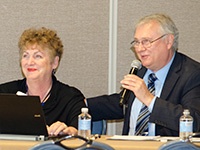Getting EID right: Tip #1
The earned income disallowance (EID) can be one of the trickiest components of rent calculation. Figuring out whether or not someone even qualifies for the disallowance is the first step to getting EID right.
Tip #1: Know EID when you see it.
One of the most common issues with EID is that even the most vigilant PHA can let an EID case slip by undetected. Families do not need to request EID or sign up for it; it's a a statutory requirement. In public housing, any situation in which a client reports an increase in income should raise a red flag.
In the HCV program, only persons with disabilities qualify for the EID, but the same idea applies. Because of the additional qualification criteria in HCV, though, the exclusion is often overlooked because staff don't often think about EID when a disabled family member reports an increase in earned income.
Further, EID applies to any increase in earned income. This means that a raise, not just new employment, may trigger EID. It also means that increases in unearned income, such as unemployment benefits, do not trigger EID. Staff need to be careful to listen for key words like "new job" or "raise," as these may trigger the EID.
Next: Getting EID right: Tip #2
Trainer and consultant Samantha Sowards has been a part of the NMA team since 2008. For beginning and intermediate students, she recommends HCV and Public Housing Rent Calculation, available in both English and Spanish. Class attendees receive a free NMA Earned Income Disallowance (EID) kit on CD. The kit provides staff with simplified methods to accurately qualify families, calculate the exclusion amount correctly, and track throughout the up-to-48-month qualifying period. Easy computer installation allows staff to view instructions on their computer screens or print for reference.



